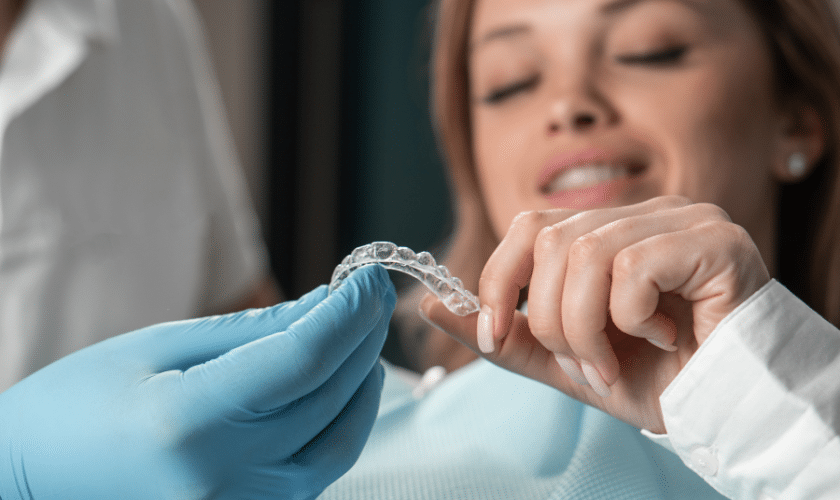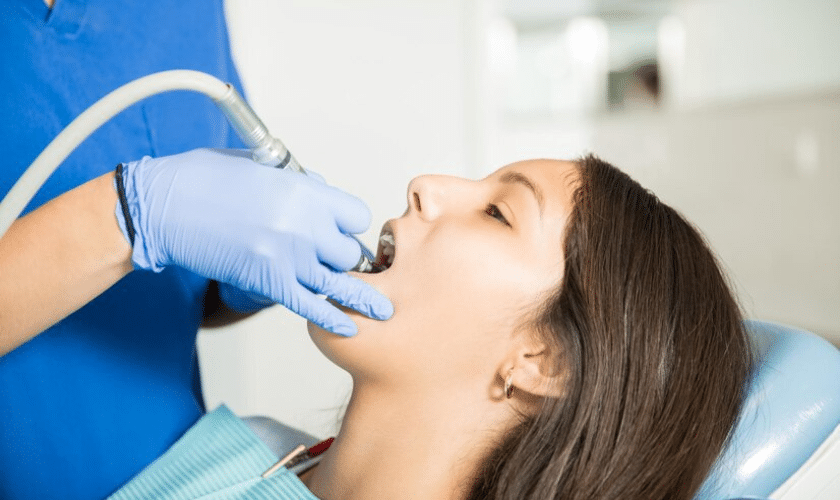
Cosmetic dentistry has become increasingly popular in recent years, as more people are looking to improve the appearance of their teeth and smile. Cosmetic dentistry is a combination of dental treatments that can be used to improve the aesthetics of your teeth and can also help with certain functional issues. In this article, we’ll look at five of the best cosmetic dentistry treatments available today.
Teeth Whitening
Teeth whitening is one of the most common cosmetic dentistry treatments. It involves using bleaching agents to lighten the natural color of your teeth and remove stains caused by food and drink or smoking. It can be done in-house at your dentist’s office, or you can use take-home kits for more convenience.
Benefits
The main benefit of teeth whitening is a brighter, whiter smile that can give you a boost in confidence. It’s also one of the least invasive and most affordable cosmetic dentistry procedures available.
Procedure
Your dentist will apply bleaching agents to your teeth in order to lighten them. In-office treatments typically involve stronger concentrations of chemicals than home treatments, and these are applied over several visits. Home treatments are usually done with weaker formulas, but they may still require multiple applications.
Risks
The primary risk associated with teeth whitening is tooth sensitivity due to the strong bleaching agents. Other risks include gum irritation and allergic reactions, though these are rare.
Dental Bonding
Dental bonding is another common cosmetic dentistry treatment, which involves using a dental material to fill in gaps or repair chips, cracks, or other minor damage to your teeth. This can help improve the aesthetics of your smile by restoring the natural shape and color of your teeth.
Benefits
The main benefit of dental bonding is that it can help restore damaged teeth so they look as good (or better) as before. It’s also one of the quickest and least expensive cosmetic dentistry procedures available.
Procedure
Your dentist will first apply a conditioning liquid to your teeth. This helps the bonding material stick better and ensures a more natural-looking result. Then, they’ll use a special dental adhesive to attach the bonding material to your teeth. The bonding material is then shaped and colored to match your natural tooth color.
Risks
The primary risk associated with dental bonding is that it can chip or wear away over time, as it’s not as strong as real tooth enamel. It may also become discolored if exposed to certain foods or drinks, such as coffee or tea.
Dental Veneers
Dental veneers are thin shells of porcelain or composite resin that are attached to the front surfaces of teeth. They can be used to improve the aesthetics of your teeth, as they are highly customizable and can be shaped and colored to match your natural tooth color.
Benefits
The main benefit of dental veneers is that they can give you a near-perfect smile by hiding stains, chips, cracks, or other damage on your teeth. They are also very durable and have been known to last for up to 15 years with proper care.
Procedure
Your dentist will first take an impression of your teeth in order to create custom veneers that fit perfectly and look natural. Then, they’ll remove a small amount of enamel from your teeth before attaching the veneers. Finally, they’ll use a special light to harden the adhesive and make sure the veneers are securely in place.
Risks
The primary risk associated with dental veneers is that once they’re attached, it’s not possible to remove them without damaging your natural teeth. They may also become discolored over time due to smoking or drinking certain beverages such as coffee and tea.
Dental Implants
Dental implants are artificial tooth roots made of titanium that are surgically inserted into the jawbone. They provide a permanent solution for missing teeth by anchoring replacement crowns or bridges in place.
Benefits
The main benefit of dental implants is that they provide a permanent, natural-looking solution for missing teeth. They also help maintain the integrity of the jawbone by preventing it from shrinking over time.
Procedure
Your dentist will first insert a titanium implant into your jawbone. This process can take several months as the implant needs to heal and fuse with your bone before it can be used to support a replacement tooth or bridge. Then, once the implant has healed, your dentist will attach a crown or bridge to the implant in order to restore the appearance and function of your missing teeth.
Risks
The primary risk associated with dental implants is that the implant may not bond properly with your jawbone and must be removed. Additionally, there is a risk of infection if proper care isn’t taken after the procedure.
Cosmetic dentistry is a great way to improve the appearance of your smile. However, it’s important to consult with a dental professional to determine which treatment is right for you. Additionally, be sure to follow all instructions carefully in order to avoid any risks or complications.
The cost of cosmetic dentistry can vary depending on the procedure and the dentist. However, many insurance plans offer coverage for at least some cosmetic dental procedures.
The length of time required for a cosmetic dental procedure can vary depending on the procedure itself. For example, teeth whitening generally only takes one or two visits to the dentist, while getting veneers may take several visits.
Yes, like with any medical procedure, there are risks associated with cosmetic dentistry. Be sure to consult with your dentist before undergoing any procedure in order to minimize these risks.



